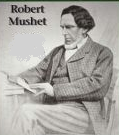A History Of High Speed Steel
 High Speed Steel specifications have been developed over many years primarily for use in high speed cutting applications, but also for the production of tools and dies. The characteristics vary with each grade, but common properties include high resistance to wear and excellent toughness. High speed steel grades also have a high resistance to softening at elevated temperatures up to 500°C, this makes them perfect for use at high speeds, hence the name.
High Speed Steel specifications have been developed over many years primarily for use in high speed cutting applications, but also for the production of tools and dies. The characteristics vary with each grade, but common properties include high resistance to wear and excellent toughness. High speed steel grades also have a high resistance to softening at elevated temperatures up to 500°C, this makes them perfect for use at high speeds, hence the name.
With heat treatment these steels can achieve a high Rockwell hardness, for example, M2 high speed steel is commonly hardened to 64HRc, whereas M42 can be hardened up to 70HRc, though commonly hardened to 66-68HRc.
Chemical composition for high speed steel grades combine some or all alloying elements of carbon, chromium, molybdenum, vanadium, tungsten and cobalt. Grades with a carbon, vanadium and tungsten combination can offer supreme wear resistance. Cobalt grades offer improved hot hardness and tempering resistance, but lowers toughness.
History
In 1868 Robert Mushet invented a self-hardening/air hardening steel known as Mushet Steel or R Mushets Special Steel. This was the first known special steel which when forged and cooled acquired a degree of hardness. It was extensively used for engineering tools and at the time was patented and its chemical composition kept a secret. We now know that an 8% tungsten content was key to the steels characteristics. In 1870 Samuel Osborn & Company of Sheffield, UK purchased the rights to manufacture the steel for mass production.
At the turn of the nineteenth century American, Frederic Taylor and Brit, Maunsel White, working in America at the Bethlehem Steel Company in Pennsylvania, did numerous tests and experiments on Mushet Steel to understand more about its characteristics. During these experiments they discovered that adding a 3.8% chromium to the 8% tungsten steel enabled it be quenched and tempered at a high temperature (close to the melting point of steel). In service it could work at much faster speeds than Mushet Steel and the name given to this was High Speed Steel.
T1 was one of the first mass produced high speed steels. It was developed and made from 1910 and at that time patented by Crucible Steel Co, New Jersey, USA. The tungsten molybdenum high speed steel M2 was invented by W Breelor in the USA in 1937.
In subsequent years many new high speed steel grades were developed. In the UK a number of special steel producers (predominantly in Sheffield) manufactured numerous High Speed Steel, as well as Tool Steel specifications. It was commonplace at this time for each manufacturer to give each grade a unique company steel brand name. Samuel Osborn & Company were a good example of this, proud to use the name of Mushet in their high speed steel grades, for example;
Samuel Osborn Brand Name AISI BS4659*
Double Mushet ND T1 BT1
Triple Mushet GZ T4 BT4
Mushet MKK M2 BM2
Mushet Special VG M15 BM15
*(introduced in 1971)
Common High Speed Steel Specifications
The numerous brand names given to tool and high speed steels was confusing for buyers at the time. In 1971 the British Standards Institution drew up new standards for all the main types of tool and high speed steels used in the UK, known as BS4659. Overtime the range of high speed steel being produced has reduced. Currently the most popular grades are M2, M35 and M42 which are available in round bar, flat bar and plate.
M2 HSS
With its tungsten molybdenum composition M2 high speed steel offers high wear resistance after hardening. With better toughness and good cutting powers it has now replaced T1 as the most popular grade of high speed steel. Nowadays T1 is rarely produced or stocked in the UK.
M35 HSS
The addition of cobalt to M35 give it better heat resistant characteristics than M2.
M42 HSS
With a high hardness (up to 70HRc) and superior hot hardness tools made from M42 tools give excellent cutting performance in service.
Applications
High speed steel specifications are commonly used for tool bits (add link), cutting tools, taps, drills, cutters and bandsaw blades. With their high hardness and high abrasion resistance high speed steels are often used in tooling applications for components such as punches and dies.

it was nice to read these lines. but i would like to know that are you sure with 70HRC of M42 ?
Standard heat treatment for M42 is to 66-68HRc; when maximum hardness is required the hardening temperature should be increased to 1200°/1210°C and tempering should be for four separate two hour periods at 520°/530°C. A hardness of 68-70HRc should be achieved.
thank you for these valuable information but sorry what about using the high speed steel in punch dies of aerospace applications ?